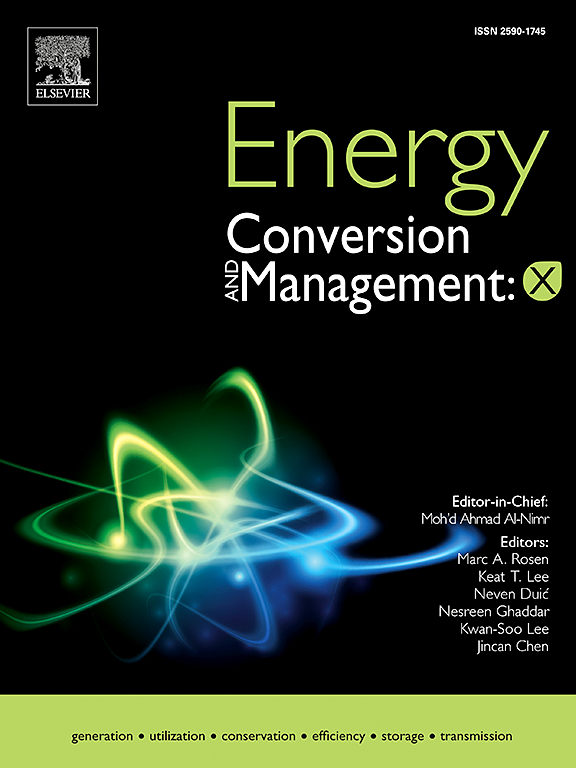A techno-economic-environmental investigation of replacing diesel engines with pneumatic motors for ferry boats
IF 9.9
1区 工程技术
Q1 ENERGY & FUELS
引用次数: 0
Abstract
This paper proposes a pneumatic propulsion system as a sustainable replacement for an existing diesel-driven ferry boat, based in Finland. The proposed system studies all key components of a pneumatic system and the technical, economical, and enviromental benefits of utilizing them for maritime propulsion. These components include air motors, air storage tanks, air compressors, heat exchangers (for thermal management), electric charger, and a battery bank. The current diesel-powered system delivers a maximum output of 250 kW per side of the ferry, consuming approximately 55,201 L of diesel annually. To meet the energy demands, calculated at 3.58 GJ per day, the pneumatic system includes four 60 kW air motors on each side, paired with a 50 m3 storage tank pressurized to 150 bars. A 132-kW compressor is used to recharge the tank within 6.2 h, ensuring operational efficiency. Economic and environmental analyses reveal that transitioning to the proposed pneumatic propulsion system would yield significant annual cost and emissions savings of $73051 and 120 tons of CO2 respectively, with a payback period of 8.1 years. This highlights the system’s potential not only for reducing operational costs but also for contributing to more sustainable maritime transport solutions. The results can be a stepping stone towards achieving global decarbonization goals as the transportation sector is responsible for 20–30 % of total emissions around the world.
求助全文
约1分钟内获得全文
求助全文
来源期刊

Energy Conversion and Management
工程技术-力学
CiteScore
19.00
自引率
11.50%
发文量
1304
审稿时长
17 days
期刊介绍:
The journal Energy Conversion and Management provides a forum for publishing original contributions and comprehensive technical review articles of interdisciplinary and original research on all important energy topics.
The topics considered include energy generation, utilization, conversion, storage, transmission, conservation, management and sustainability. These topics typically involve various types of energy such as mechanical, thermal, nuclear, chemical, electromagnetic, magnetic and electric. These energy types cover all known energy resources, including renewable resources (e.g., solar, bio, hydro, wind, geothermal and ocean energy), fossil fuels and nuclear resources.
 求助内容:
求助内容: 应助结果提醒方式:
应助结果提醒方式:


